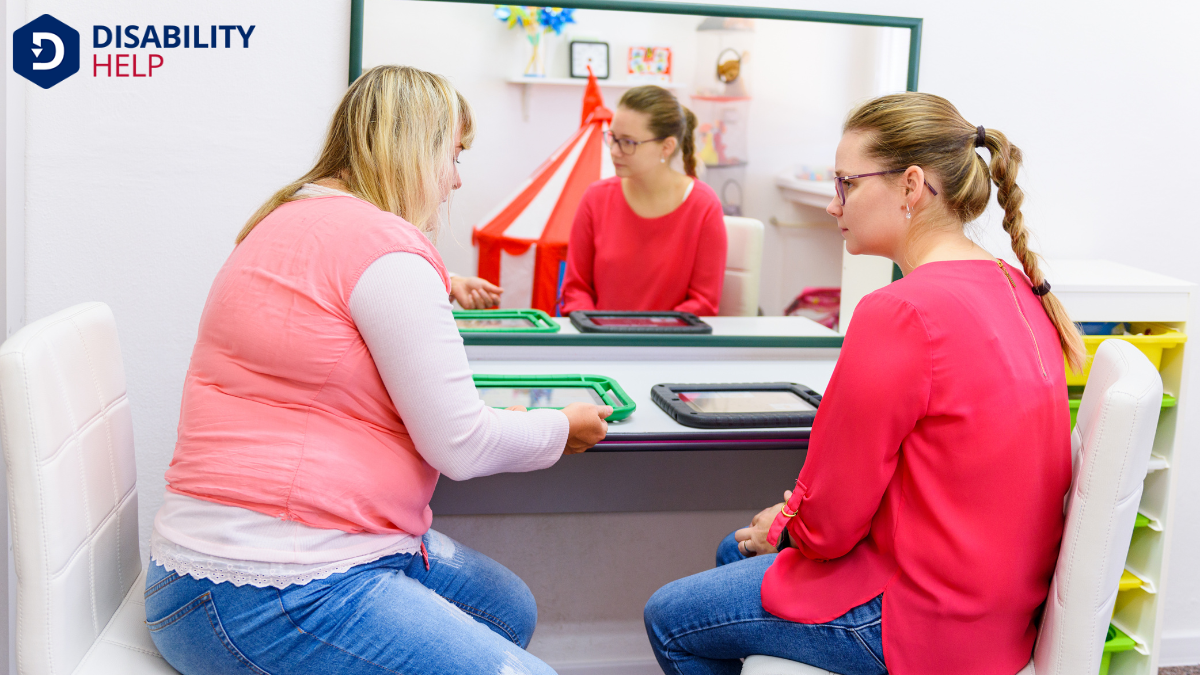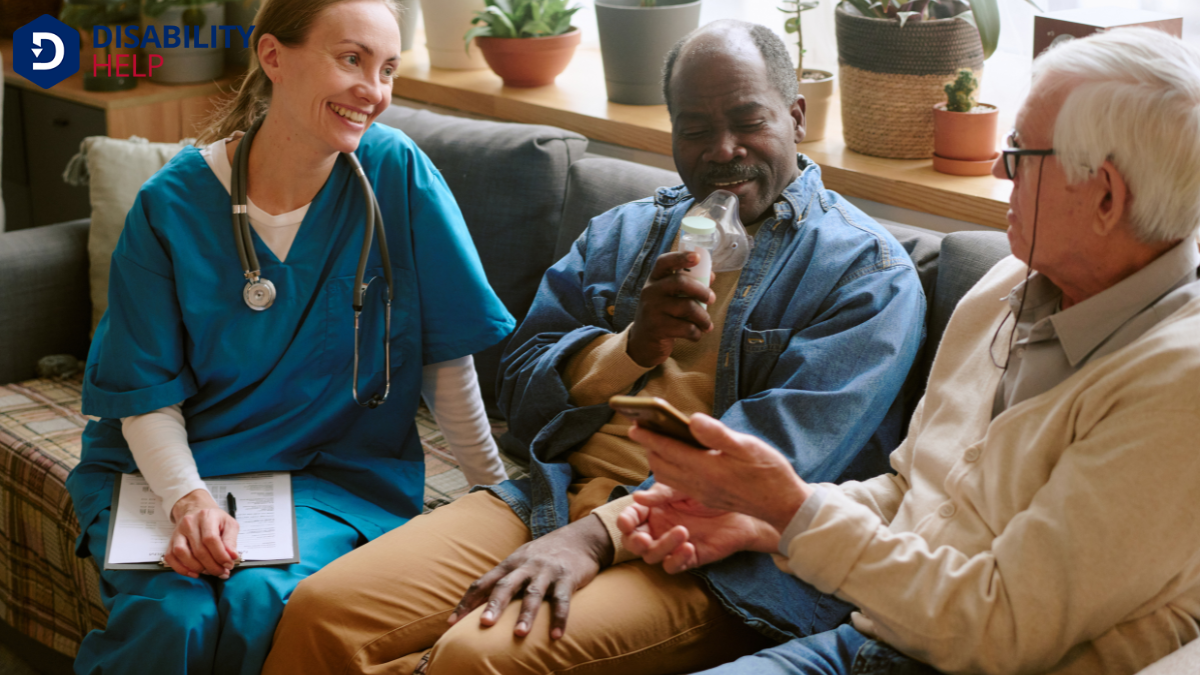Let's explore assistive communication devices together. These tools help people with speech and language challenges communicate more effectively. They range from simple picture boards to advanced speech-generating devices. How do they work, and who benefits from them? By understanding these devices, we can better appreciate their impact on lives. Curious about how technology plays a role in this? There's so much more to uncover.
Key Takeaways
- Assistive communication devices help individuals with speech challenges communicate effectively through various tools and strategies.
- These devices include both high-tech options like speech-generating devices and low-tech tools like picture boards.
- They enhance self-expression and foster connections, improving users' quality of life and social interactions.
- Customizable features in these devices meet individual vocabulary and speech needs for personalized communication.
- Assistive communication devices promote independence, confidence, and community inclusionThe practice of ensuring that individuals with disabilities are fully integrated and involved in all... for people with communication difficulties.
Understanding AAC: A Brief Overview
When we explore the world of augmentative and alternative communication (AAC), we're diving into a transformative field that empowers individuals with speech and language challenges. AAC encompasses a range of strategies and tools designed to support those who struggle with verbal communication.
Through our journey, we realize how essential these methods are for enhancing interaction and self-expression. We learn that AAC isn't just about devices—it's about fostering connections and improving quality of life.
By integrating gestures, symbols, and visual aids, AAC provides diverse ways to communicate. Our understanding deepens as we see how these tools promote independence and confidence.
Together, we can create a more inclusive world where everyone has a voice, regardless of their verbal abilities.
Types of Assistive Communication Devices

As we explore the types of assistive communication devices, we'll notice they're generally categorized into high-tech and low-tech options.
High-tech devices include dynamic speech-generating devices and apps, offering a wide range of communication possibilities.
Meanwhile, low-tech tools, like picture boards and communication books, provide simple yet effective ways to support individuals in expressing themselves.
High-Tech Communication Devices
While advancements in technology continue to shape our world, high-tech communication devices have revolutionized the way individuals with communication challenges interact with others. These devices, often equipped with advanced software, help users express themselves through various means, like text-to-speech and symbol-based communication apps.
We've seen how touchscreens, dedicated communication devices, and even smartphones become essential tools for those who struggle with verbal communication.
These high-tech solutions can be personalized to fit each user's needs, allowing them to communicate effectively with family, friends, and professionals. By harnessing the power of technology, we're breaking down barriers and fostering more meaningful interactions.
It’s incredible how these devices not only improve communication but also enhance the quality of life for many individuals.
Low-Tech Communication Tools
Although high-tech gadgets grab much of the spotlight, low-tech communication tools play an essential role in assisting those with communication difficulties. These tools can be as simple as picture boards, communication books, or letter boards. They provide a reliable way for individuals to express themselves without the need for electricity or internet access.
We appreciate their accessibilityThe design of products, devices, services, or environments to be usable by people with disabilities.... and affordability, making them a practical choice for many families and caregivers.
Let’s consider how these tools work. A communication boardA board with pictures, symbols, or words used to help individuals with speech impairments communicat... might've pictures or symbols representing basic needs and feelings. The user points to images to convey messages. This straightforward method can greatly enhance the quality of life for those who struggle with verbal communication.
How Assistive Communication Devices Work
When we explore how assistive communication devices function, we notice they generally fall into a few types, such as text-to-speech devices or symbol-based communication boards.
These devices are designed to enhance user interaction by translating thoughts into words or symbols that others can understand.
Types of Communication Devices
Assistive communication devices come in a variety of forms, each designed to meet different needs and preferences. Some are simple, like picture boards or communication books, which allow us to point to images or words. These are great for those who prefer a tactile, non-digital approach.
On the other hand, we've high-tech options like speech-generating devices. These devices can speak phrases out loud when we type or select words, offering a voice to those who mightn't have one. Additionally, there are apps for tablets and smartphones, which are portable and convenient.
We can customize these to suit individual vocabulary and speech needs. Each type serves a unique purpose, ensuring everyone has a chance to communicate effectively.
Enhancing User Interaction
Moving from the variety of communication devices available, let's explore how these tools enhance user interaction. Assistive communication devices bridge gaps in understanding by providing personalized, user-friendly interfaces. They adaptA grassroots disability rights organization in the U.S. that focuses on promoting community-based se... to individual needs, ensuring effective communication.
Through intuitive design, these devices transform complex language into accessible formats, making interaction seamless. We might find text-to-speech features that articulate thoughts clearly or eye-tracking technology that allows selection of words or phrases without touching a screen.
These innovations empower users to express themselves confidently and engage more deeply with those around them. By prioritizing ease of use and accessibility, assistive communication devices foster independence and boost social connections.
As we embrace these technologies, we're helping create a more inclusive, communicative world for everyone.
The Role of Technology in AAC
In the domain of Augmentative and Alternative Communication (AAC), technology plays a pivotal role in enhancing the way individuals with communication challenges express themselves.
We can harness technology to create tools that bridge communication gaps and foster meaningful interactions. From simple communication boards to sophisticated speech-generating devices, technology transforms the possibilities for those who struggle to speak or write traditionally.
Who Can Benefit From AAC Devices?

Though many might assume AAC devices are only for those with severe communication impairments, a wide range of individuals can benefit from them.
We should consider how these devices can transform lives beyond our initial expectations. Here’s how AAC devices can help:
- Children with developmental delays: These devices offer a way to communicate when speech is developing more slowly, fostering interaction and learning.
- Adults with acquired conditions: After a stroke or an accident, adults might lose the ability to speak. AAC devices provide them a voice to reconnect with loved ones.
- Individuals with temporary speech loss: Whether due to surgery or injury, temporary loss of speech shouldn’t mean isolation. AAC devices guarantee they remain part of the conversation.
Understanding the potential of AAC devices empowers us to see them as tools for connection and inclusionThe practice of creating environments in which any individual or group can be and feel welcomed, res....
Selecting the Right Device for Individual Needs
Recognizing the diverse range of individuals who can benefit from AAC devices, we should now focus on how to select the right device for each person's unique needs.
First, let's consider the person's specific communication challenges and preferences. Is the individual more comfortable with symbols, text, or voice output?
Next, we must evaluate the environment in which the device will be used. Will it be primarily at home, school, or work? Understanding the user's daily activities helps us determine the device's portability and durability.
Additionally, we need to assess the user's motor and cognitive abilities to guarantee the device is accessible and user-friendly.
Real-Life Impacts of AAC Devices
When we perceive the real-life impacts of AAC devices, it’s clear they transform not just communication but entire lives. These devices open doors to possibilities we might've never imagined.
Here’s how they make a difference:
- Independence: With AAC devices, individuals communicate their needs and desires without relying solely on others. This autonomy fosters self-confidence and personal growth.
- Social Connection: Engaging in conversations with family and friends becomes a reality, enhancing relationships and eliminating feelings of isolation.
- Educational Opportunities: Access to learning improves considerably as students communicate effectively with teachers and peers, ensuring they fully participate in educational activities.
As we grasp these impacts, we’ll recognize the profound role AAC devices play in enriching lives and building inclusive communities.
Conclusion
In exploring assistive communication devices, we've seen how these tools transform lives, empowering individuals with speech and language challenges. From simple picture boards to advanced speech-generating devices, they open doors to independence and social interaction. By embracing technology, we can tailor solutions to fit individual needs, ensuring everyone has a voice. Let's continue to support and innovate in this field, enriching lives and fostering inclusivity for all members of our community. Together, we can make a difference.






